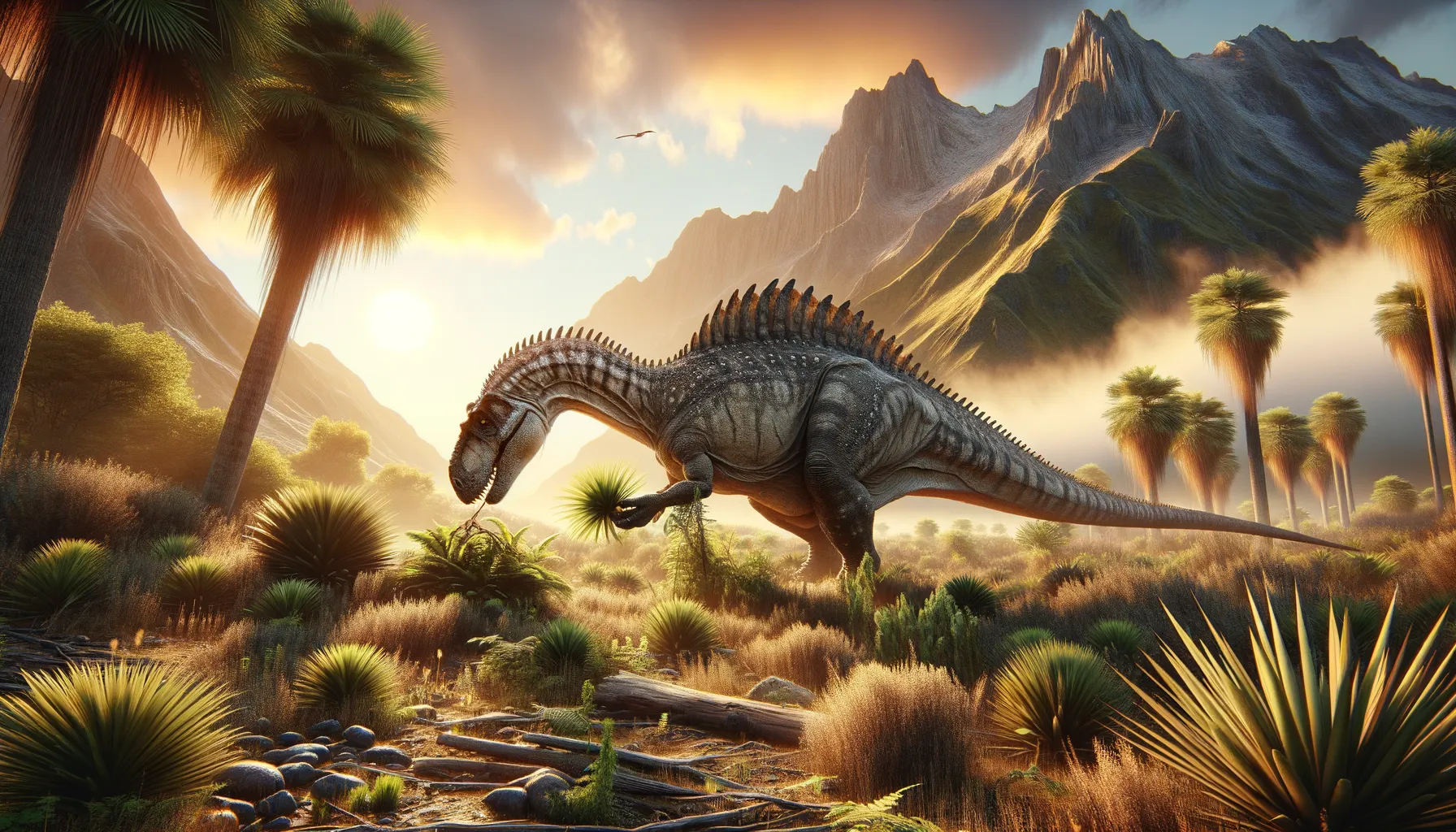
Horshamosaurus
Armor-plated guardian of the ancient world
Period
Cretaceous
Length
Estimated to be around 15 feet.
Height
About 3 feet tall at the hips.
Weight
Approximately 1 to 2 metric tons.
Horshamosaurus was a herbivorous dinosaur that roamed the Earth during the Cretaceous period. Known for its armored plates, this dinosaur was well-protected against predators. It was discovered in England, where its fossils offer valuable insights into the variety of armored dinosaurs that existed during its time. Despite its impressive defense features, it led a relatively slow-paced life, primarily foraging for plants and surviving in a possibly harsh environment.
Diet
Horshamosaurus primarily fed on low-lying plants and shrubs. It used its beak-like mouth to strip foliage and had flat teeth suitable for grinding plant material.
Hunting
As a herbivore, Horshamosaurus did not hunt prey. Instead, it used its keen sense of smell to locate patches of high-quality vegetation, navigating through its environment with care to avoid predators.
Environmental challenges
Horshamosaurus lived in a dynamic environment where changes in climate could alter plant availability. It faced predation from large carnivores, requiring its armor for protection. Seasonal changes might have impacted its food supply, necessitating long migrations in search of sustenance.
Speed
Relatively slow, due to its large, cumbersome body.
Lifespan
Estimated to be around 70 to 80 years.
First discovery
Unearthed in 1985 in southeastern England.
Fun Facts
- Horshamosaurus is a member of the ankylosaur family, known for their armored bodies and club-like tails.
- The name Horshamosaurus comes from the town of Horsham in West Sussex, England, where its fossils were discovered.
- Horshamosaurus lived during the Early Cretaceous period, around 130 million years ago.
- This dinosaur was a herbivore, meaning it only ate plants, which it likely gathered with a beak-like mouth.
- Horshamosaurus had bony plates embedded in its skin, providing protection from predators.
- Despite its heavy armor, Horshamosaurus was relatively small compared to other dinosaurs, estimated to be about 4 meters (around 13 feet) long.
- The discovery of Horshamosaurus adds valuable information about the diversity of ankylosaur dinosaurs in Europe.
Growth and Development
Young Horshamosaurus likely grew rapidly to develop their defensive armor early for survival. They could have relied heavily on their parents or social groups during their early stages. Growth spurts might have coincided with abundant food periods, optimizing nutrient intake for rapid development.
Habitat
It favored lush, vegetative environments that supported its dietary needs. Forested areas providing cover and food sources were ideal for its survival. Proximity to water bodies would have been beneficial, offering both hydration and additional plant variety.
Interaction with other species
Horshamosaurus shared its habitat with various other dinosaurs, including both herbivores and predators. It used its armor to deter attacks and possibly engaged in displays or noises to warn off competitors. Collaboration with other herbivores might have occurred, like moving in groups for added safety.
Natural lifespan
Its natural lifespan likely matched that of comparable herbivorous dinosaurs of its era.
Reproduction
This dinosaur is presumed to have laid eggs, like other members of its species. Nesting sites were probably chosen for their security against predators, with some degree of parental care possibly involved. Eggs would hatch after a period, with hatchlings being vulnerable to environmental factors.
Social behaviour
Horshamosaurus may have been a solitary creature or lived in small groups. Social interactions likely centered on resource competition and mating. Communication might have included vocalizations or visual displays, especially during mating season.
Fossil locations
Fossils have been primarily located in West Sussex, England. Excavations in this area have revealed important insights into the variety of European armored dinosaurs. The locations support rich histories of diverse prehistoric ecologies.
